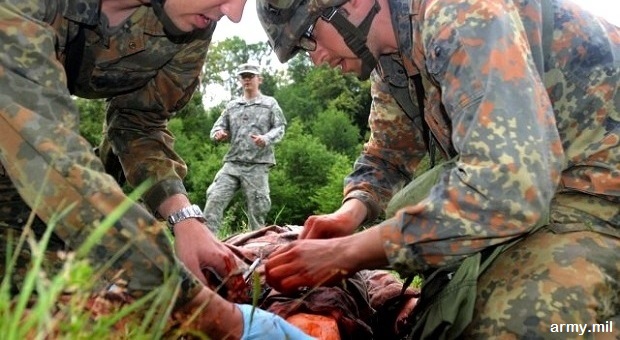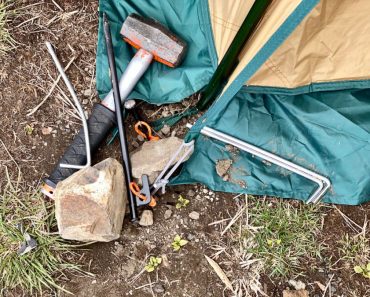In the US, now and then, you see news reports of the latest shooting by unhinged and resentful individuals. Even so, few people believe that one day, they could wind up in the crosshairs of a gunman’s sight. By now, we should all understand that such a scenario can happen anytime and pretty much anywhere.
When things do go south, what will your response be?
Will you make the news as part of the gruesome statistics, or will you be the one who lives and tells the story?
During an active shooter scenario, most people will do nothing because they underestimate the likelihood of a disaster, and that’s what we call normality bias. Because everything in their life follows a regular pattern, they believe it will always work like that, and their day will proceed as usual because, well, that’s the natural order of things.
When the event occurs, their unprepared brain will try to find reasonable explanations for what is going on to fill the normalcy bias narrative. So, for example, the noise of gunfire will be mistaken for a firecracker or a blown tire or anything but a shooter trying to kill them.
To make things even worse, as part of normalcy bias, most people believe that emergency medical personnel is always at hand and will take care of them if they get hurt. The same goes for law enforcement, and we tend to believe that the police are just around the corner and they will come in time to neutralize the threat and save the day.
Understand that public servants are doing what they can to mitigate an event’s damage that results in casualties. Still, in the case of a mass shooting, things will be over in a few minutes, and usually, there isn’t enough time to assist those in need.
Always have a plan
As preppers, some of us learned the hard way that we become part of the herd without a plan of action, and we will act accordingly. In the case of an active shooter scenario, you will see people around you drop to the floor or cover under the table or whatnot, trembling in fear.
You will tend to do the same; however, remaining In plain view of the attacker only leads to a bad outcome. Only by having a plan will you have a chance of getting out alive and end up on the news, telling people how it all went down.
Now that malls have started to be packed with people, let’s assume you’re at the mall and you’re doing whatever you like to do at the mall. If suddenly you hear gunfire nearby, what will you do?
Will you run away?
If so, where are you running?
If there’s nowhere to run, what do you do? Do you hide in the bathroom?
Things like this should be on your mind if you like to spend your time in crowded areas. As you read this, you may think that such thinking is a bit excessive. However, in a country that sees its share of mass shootings every year, this has slowly become the new normal we find ourselves.
What you do in those first seconds once people start shooting will determine the outcome. So it would be wise to give yourself a head start and always be aware of what’s happening around you. And this leads us to situational awareness, or the perception of elements and events around you, their occurrence in time and space, their meaning, and the projection of their future status.
For example, if you find yourself at the mall, you should know where the exits are. If a commotion starts, you should move in the opposite direction. If you hear a gunshot, you should do so as fast as you can, but understand first where the gunshots are coming from to make sure you are headed in the opposite direction – since the echo may trick you into believing otherwise.
In most cases, those around you will become sure victims since situational awareness is a sense that has been reduced to the point that it has become nonexistent. This is especially true in people who are so immersed in their phones that they fail to notice even the most obvious things around them, and they will become easy targets once the shooting starts.
Helping the wounded
If there are wounded people around you, you have to decide if you should help them and do so without making things worse for them. It may sound selfish, but you have to figure out if you leave the scene or remain behind to give a helping hand.
In some instances, fleeing would be your only chance of survival, and you should listen to your gut if it tells you there’s nothing you can do to become a savior. There’s no point staying in the line of fire and understand that not even law enforcement won’t help the injured until the target has been eliminated.
However, if you have the chance to move people out of harm’s way, you should do so. Barricade inside a room if you can do so and lay the wounded victim on the floor. Push every heavy piece of furniture you can find against the door and turn off the lights.
Try to remain as silent as possible and quietly call 911 before you assist the wounded victim. It is recommended to have them on the line to provide updates regarding the developing situation and the bleeding victim (if you need assistance).
The bleeding victim may be pale and agitated, and you have to explain who you are and that you’re there to help. Explain calmly that they need to stay quiet, and it’s essential to do so to survive the ordeal. Next, find any items that could be used to support the victim’s feet. You need to employ the “shock position” as a treatment for shock and elevate the legs of the victim approximately 8-12 inches from the floor.
Use whatever is available to cut the patient’s clothing and expose the wound since this will help you understand what you’re dealing with.
Next, you will need to find something to use as a compression dressing and pressure the bleeding. You can use your shirt or any other piece of clothing item. If it gets saturated, remove the improvised bandage and place others on top of the first one. In some cases, just applying direct pressure on the bleeding vessel is enough to stop the bleeding.
However, if that’s not the case, you will need to apply for a tourniquet. You will have to improvise one using a tie, bandana, or scarf and tie it 3 inches above the wound. If the bleeding doesn’t stop, you will need something to enforce the tourniquet.
For example, use a tactical pen, tie a knot over it, and twist it until the bleeding stops. If that works, tie another knot on the improvised tourniquet to keep it In place and find something to cover the victim to keep them warm. Be advised that you might need to apply a second tourniquet above the first one in some instances.
It would help if you also understood how blood loss works and why it’s essential to act fast when helping a bleeding victim. The average size adult has around 10 pints of blood, and the more blood is lost, the more different the effects on the body are:
- Losing 1.5 pints has little or no effect at all. People often donate up to a pint of blood every eight weeks without putting themselves in danger.
- Losing between 1.5-3.5 pints causes a state of agitation, an increase in heartbeat and respiration. The skin becomes cool and may look pale.
- Losing between 3.5-4 pints will cause a blood pressure drop, and the patient will become confused, and a rapid heartbeat can be felt.
- Losing more than 4 pints of blood will change the color of the skin. The patient is pale, and most adults will become unconscious. As time goes by, if the bleeding isn’t stopped, the blood pressure will drop further, and the heart rate and respiration will decrease, eventually leading to the patient’s death.
Being prepared
In specific scenarios, you are sometimes forced to improvise to save someone’s life or even yourself. Rather than figuring out if you can do your best with the materials on hand, you should plan to carry some medical items that would make your job easier. An ideal first aid kit should contain the following:
- A few pairs of nitrile gloves to decrease the risk of wound infection. You may want to avoid latex gloves since some people are allergic to latex.
- Several compressed gauzes are to be used when you have to deal with heavy bleeding.
- Bandage scissors or EMT shears; are not mandatory, but they will be pretty valuable when you need to cut away clothing and expose the wound without causing additional damage (like when misusing a knife).
- Hemostatic agents to stop the bleeding quickly with direct pressure. My choice here is the Celox packets which I buy from Amazon.
- Compression dressings that allow you to cover the wound with pressure. The most famous and popular choice here remains the Israeli battle dressing.
- Tape, which becomes mandatory to fix dressings in place while you provide care to others.
- Tourniquets, yes plural because you need to have at least two if the first you’re using isn’t enough to stop the bleeding. From experience, I can tell you that the most popular ones within the prepper community are CAT, SWAT, and SOFT. If you have kids, go with the SWATs since they are designed to handle thinner arms better than the CATS and SOFTs.
- Vented chest seals are recommended in case you will be dealing with a gunshot wound to the chest. Asherman and Hyfin are two brands you can trust.
- One or two Mylar blankets. They are very compact and lightweight and will help you keep the patient warm.
The items named above are my favorite, but you can use any other brand that you like. The main thing here is to know how to use every item in your kit quickly and effectively.
Concluding
Hopefully, you’ll never find yourself in a situation where you have to deal with an active shooter and provide help for the wounded. However, if you find yourself in such a situation having a plan (and a first aid kit) and acting on it may lead to a favorable outcome.
Always hope for the best, but be prepared for the uncertain future!





























